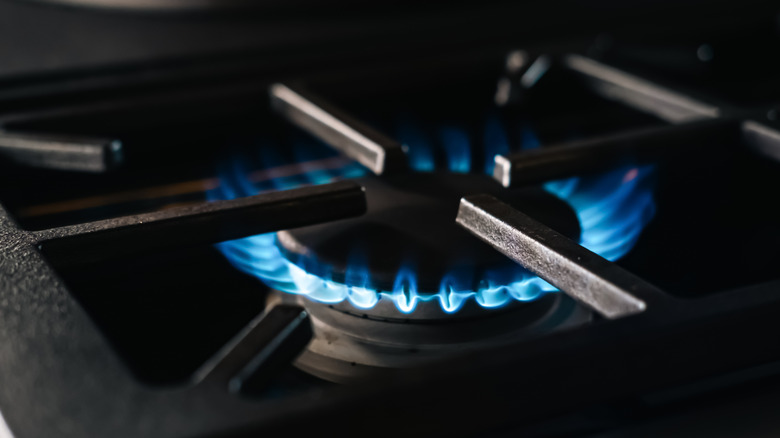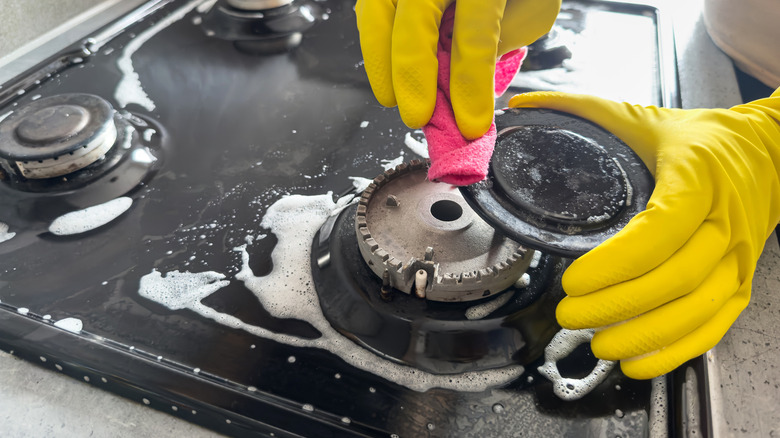If You Avoid Cleaning This Part Of Your Gas Stove You'll Pay For It Later
Ideally, you're cleaning your gas stovetop after each time you use it. In reality, you're probably not cleaning it quite that often — maybe you wipe it down whenever you (ideally) clean your kitchen. But if it feels like your stove's not firing on all cylinders, so to speak, it's possible you haven't been cleaning your stove's burner ports.
What part of the stove is the burner port, you may ask? If you're not well-versed in the individual parts of your stove, it's the small opening on each of your burners where gas ignites beneath the caps, creating the flames you use to cook your food. And, thanks to all that garlic bread you can make on your stove top, those ports could be clogged with crumbs and debris.
We spoke to Dennis Godynuk, the lead appliance expert at Comfort Appliance Repair in Nashville, Tennessee, who says a neglected or blocked burner port can absolutely affect your stove's heat levels: "You'll see a lopsided or weak flame, yellow tips or soot, endless clicking with no light, or that gas smell without ignition." He goes on to explain that these issues are usually caused by messy cooking that hasn't been cleaned up. "Food boil-overs (especially sugary sauces) glue ports shut and the burner starts cooking unevenly."
How to clean the burner ports on your gas stove
Now that we've painted a messy portrait of one of the biggest mistakes you could make with your gas stove, how do you clean out your burner ports? Dennis Godynuk puts it in pretty straightforward terms, advising, "Kill power to the igniters and shut off gas if you're removing parts. Lift the grates, remove caps and burner heads. Soak caps in hot, soapy water (or seal in a bag with a splash of ammonia overnight), then scrub."
For smaller ports, you'll need a tool that can clean out the bits of food without damaging the metal. Godynuk notes, "For the tiny ports, use a wooden toothpick or nylon brush but never a metal pin that can widen the holes. Rinse, dry completely, re-seat parts, and make sure the igniter and burner head line up before you relight." If you use a toothpick, just be careful not to accidentally break it off inside the port, since it won't be easy to remove. Some folks avoid wooden toothpicks entirely, going with a wire or brush, instead.
Godynuk suggests you brush out your burner ports weekly, because continued use of the stove could bake any crumbs, making them hard and sticky. Most of all, he recommends that you try not to spill food in the first place, adding, "Wipe spills as soon as the stove is cool. Use a deeper pan for sauces that like to foam."

